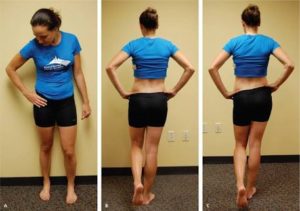The Treatable Headache!
Headaches are common and most of us will suffer with one at some stage in life. Headaches can be debilitating, affecting your quality of life and disrupt the performance of our daily activities.
Not all headaches are the same and an accurate diagnosis is required to ensure the optimum management and treatment of each individual presentation. One type of headache, the “Cervicogenic headache” can be treated by our qualified Physiotherapists at Be Your Best Physiotherapist.
WHAT ARE THE COMMON SYMPTOMS OF A CERVICOGENIC HEADACHE?
- Pain in the neck, base of the skull, behind the eyes, the temple or the top of the head.
- Pain following a sustained or repeated posture (eg. slumping forwards)
- Pain may also be associated with pain in shoulders or arms
Be Your Best Physiotherapists can assess your neck and confirm if it is the source of your headache. The goal of headache management is to confirm your diagnosis, provide hands-on treatment and develop an exercise program to keep you headache free.
Hands on Physiotherapy treatment may include:
- Massage
- Joint mobilisation and stretching
- Taping
- Dry needling
If you are suffering with a headache and are unsure of its cause, make an appointment with one of our experienced Physiotherapists at Be Your Best Physiotherapy.
Do you have pain on the outside of your hip?
Often pain on the outside of the hip (lateral hip pain) can start gradually, with no incident. Because of this, people often get diagnosed with having hip arthritis although this may not always be the cause of symptoms. Lateral hip pain can make activities such as prolonged standing, lying on your side, work or exercise unbearable.

There are three common areas that could be causing hip pain:
Lower back: Structures such as intervertebral discs, facet joints, or nerve impingement can all cause lateral hip pain.
Sacroiliac Joint: This is the joint where your back connects to the pelvis (the sacrum to the ilium). There are many conditions that can effect this joint such as instability (ligament laxity), osteoarthritis or the inflammatory rheumatoid arthritis..
Tendons: Many of the gluteal muscles have attachments to the lateral hip. With poor gluteal control and strength these tendons are compromised and can suffer from an overloading condition known as a tendinopathy. Tendinopathies in the hip are often misdiagnosed as bursitis, although bursitis is often something that is a result of the poor tendon condition. Many people will have a cortisone into the bursa to settle any inflammation but be dismayed when their pain doesn’t go away!
So what can be done?
All of the Physios here at Be Your Best have had a lot of experience with each of these common causes of pain on the side of the hip. In your appointment, you will be thoroughly assessed to determine the cause of your symptoms. If the cause of your symptoms can be conservatively managed, your physio will provide hands-on massage treatment, strengthening, gait re-education and footwear & lifestyle advice. You will take an active role in your recovery as our experience tells us this will make your recovery quicker and more likely to work in the long run!
If your condition can’t be managed by Physio alone, we will be refer you for scans or to a specialist for an opinion, if necessary.
What is a Pilates Trapeze table?
When we move to our new premises, we will be adding Pilates Trapeze tables to our Reformer Pilates classes. 
The “traps” table, is said to initially have been created by Joseph Pilates so that bed-bound patients had the ability to exercise using springs and straps.
The most challenging aspect of the traps table is its orientation. Due to the way it is constructed, most of the exercises performed on the table are done with very light spring resistance, instead utilising gravity and body weight. Because of this, good core activation and balance is a must!
Although similar to the benefits of reformer pilates, the traps table allows greater range of movement through strengthening exercises and its benefits include:
• core stability
• spine mobility
• increased upper body strength
• shoulder and scapular stability
• posture correction
• improved coordination
• increased balance
We look forward to adding the challenge of the Traps tables to our classes!
THERE IS MORE TO PHYSIO THAN YOU THINK
Not sure if Physiotherapy is for you? The Australian Physiotherapy Association has launched a new website, CHOOSE PHYSIO (www.choose.physio), to explain the injuries that Physiotherapists can treat and how Physiotherapy can help you.
At Be Your Best Physiotherapy we specialise in the treatment of Neck and Back Pain, Sports Injuries, Pre & Post-Natal care and Pelvic Floor Rehabilitation.
Still not sure if Physiotherapy can help you? You are welcome to ring Be Your Best Physio (5996 2693) to discuss your injury or concerns over the phone, with one of our experienced Physiotherapists.
WHAT IS CHRONIC PAIN & HOW DO WE TREAT IT?
Chronic pain is pain that has lasted for longer than 3 months. Currently 1 in 5 Australians suffer from chronic pain.
PAIN DOES NOT EQUAL DAMAGE:
Despite what most people think, the amount of pain you experience does not relate to the amount of tissue damage in the area. Pain is an uncomfortable sensation produced by the brain based on the perceived “threat” to the area.
For example if a muscle has been torn, the nerves will send a message to the brain alerting it to the damage in the muscle. The brain may then decide to send a pain signal to that area to alert you of the damage, causing you to be more protective of the muscle, avoiding further injury.
Conversely think about a scratch that you don’t remember getting. At the time, the signals from the area still travelled to the brain to alert it of the damage, but the brain did not see this as a threat, therefore did not send out any pain signals. In this situation the scratch is proof that tissue damage occurred, however without the sensation of pain.
Why does the pain hang around?
The brain does not just rely on the signals from the muscles and tissues to determine if it should send out the pain signals, it takes on board the information from all our senses and previous experiences. Fear, anxiety and stress will also influence the brains decision to send out the pain signal. After 3 months it is likely that the initial tissue damage has resolved, however fear, anxiety and previous experiences is now having a significantly greater influence on the brain, encouraging the pain signals to be sent and for you to suffer from chronic pain.
How we treat chronic pain
Early Physiotherapy will focus on reducing the damage to the tissues, which in turn will reduce the damage signals being sent to the brain, resulting in the brain sending fewer pain signals. However in chronic pain physiotherapy that focuses solely on treating the painful area may not make any difference to your pain levels. In chronic pain, physiotherapy needs to address all the areas that can affect your pain.
FEAR: Having pain for such a long time you may be scared to do any exercise, worried that you are doing more damage. Research has shown however that understanding how pain is created can help reduce your fear about the pain you are feeling. Our Physiotherapists will help to further explain pain and give you exercises to help strengthen your muscles, allowing you to return your normal activities.
ANXIETY: Your pain may have started when you bent over, you sought treatment and they told you not to bend forward as this may make the pain worse. Now you are so anxious about bending forward that even thinking about the movement elicits the pain signals. Your physiotherapist will help to retrain these movements, reducing your anxiety about them and as a result reducing the pain.
STRESS: Pain can be a very debilitating sensation that can leave you feeling quite down. Exercise helps to increase the production of natural chemicals such as endorphins, improving your overall sense of well-being. It can also act as a slight distraction, shifting your focus away from your everyday pain and stress. Our physiotherapists will help you develop a gentle exercise program, tailored to your current capacity.
Please contact Be Your Best Physiotherapy to find out more about our individual Physiotherapy and group exercise therapy, designed to assist chronic pain clients.



Recent Comments